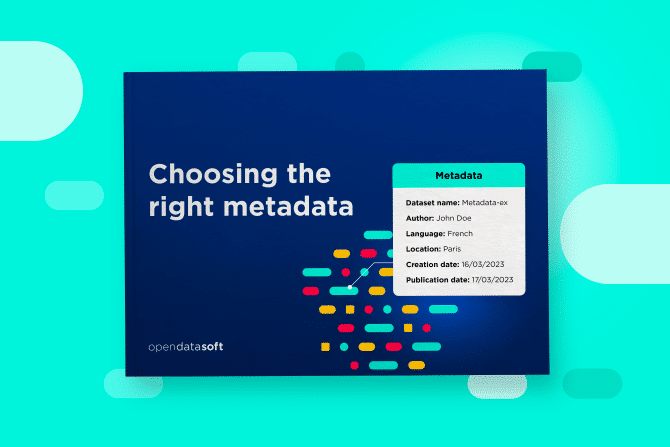Glossary
Statistical Data and Metadata eXchange (SDMX)
SDMX (Statistical Data and Metadata eXchange) is a standard developed by the statistics community to manage and automate the process of exchanging and sharing statistical data and metadata between organizations and with data consumers.
What is Statistical Data and Metadata eXchange (SDMX)?
Launched in 2002, it is sponsored by eight international organizations (Bank for International Settlements (BIS), European Central Bank (ECB), Eurostat (Statistical Office of the European Union), International Labour Organization (ILO), International Monetary Fund (IMF), Organisation for Economic Cooperation and Development (OECD), United Nations Statistical Division (UNSD), and World Bank. It is codified as an ISO standard, number 17369:2013.
It is made up of three components:
- Technical standards (including its Information Model)
- Statistical guidelines
- An IT architecture and tools
SDMX aims to standardize the exchange of statistical data and metadata between international organizations and countries, increasing harmonization, efficiency and communication.
Why is Statistical Data and Metadata eXchange (SDMX) needed?
Sharing statistical data between organizations, governments and businesses delivers enormous benefits, but is complex and time-consuming if each organization uses its own formats, structures and terms. This holds back data exchange and leads to potential inefficiencies or inaccuracy if different organizations describe terms or metadata in different ways.
SDMX therefore provides the common framework, standards and tools to exchange data, around areas as diverse as agriculture, economics, finance, trade, the environment, the UN Sustainable Development Goals and social statistics.
What are the benefits of Statistical Data and Metadata eXchange (SDMX)?
For organizations producing and consuming statistics data, SDMX offers nine key benefits:
- It harmonizes statistical data and metadata to ensure consistency, building trust
- It increases efficiency by automating data preparation, sharing and reporting
- It enables better policy-setting and decision-making by ensuring data is coherent and comparable
- It reduces costs for end users who build applications to access data made available by various institutions
- It reduces development and maintenance costs through standardization
- It delivers data faster through automation
- It improves data quality through better and faster validation
- It addresses the increased demand for data and underpins open data sharing, removing barriers to data access
- It improves data governance by enforcing standards at an international and organization level.
Additionally, it provides access to a global community of practitioners and open source IT tools, helping statistics organizations to modernize and innovate.
How does Statistical Data and Metadata eXchange (SDMX) work?
SDMX uses its information model and guidelines to describe statistical data and metadata in a consistent, harmonized manner. It provides a set of common tools, processes, terminologies, and methodologies to smooth the exchange of information between producers and consumers.
This can then be exchanged through different formats:
- SDMX-ML, used for the exchange of structural metadata, data sets and queries
- SDMX-EDI (GESMES/TS), used by the European Central Bank to exchange statistical data and metadata with central banks in European countries
- SDMX-JSON, to support data sharing over the internet
These are maintained by the SDMX initiative, an active international community that helps increase adoption of SDMX. Through regular meetings and a five-year roadmap the organizations sponsoring SDMX drive forward the sharing of statistical data.
How is SDMX used?
There are two main use cases for SDMX:
Data exchange between organizations
Most often SDMX is used to improve data and metadata collection and sharing processes between statistical organizations. By using SDMX this process can be fully automated, while ensuring quality, consistency and trust.
Data discovery and visualization
By using SDMX statistical organizations can make statistical data and metadata easily available to external users (data consumers), such as via open data portals. It can also be used internally to automate the loading of data and reference metadata into databases.
Learn more

Metadata Guide
Choosing the right metadata Discover our standard template composed of 20 metadata. These attributes are grouped into 6 categories according to the famous questioning method used by journalists: the 5W1H. What is the dataset about? Who created it? Why does the dataset exist? How can the dataset be used? What is the dataset’s time frame? What is the spatial coverage of the dataset?

Data, metadata, data assets, data products: understanding the differences between these key concepts
In an increasingly data-driven world, understanding the differences between data, metadata, data assets, and data products is essential to maximizing their potential. This is because these interrelated yet distinct concepts each play a key role in driving digital transformation by facilitating data sharing and consumption at scale.

2025 data leader trends and the importance of self-service data – insights from Gartner
Growing data volumes, increasing complexity and pressure on budgets - just some of the trends that CDOs need to understand and act on. Based on Gartner research, we analyze CDO challenges and trends and explain how they can deliver greater business value from their initiatives.